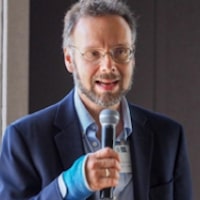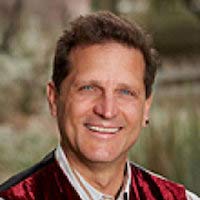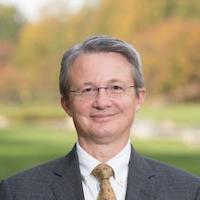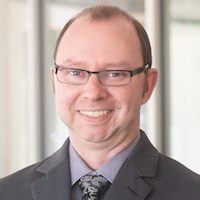
Farheen Gani
We likely will never see CSI: Nuclear on our favorite TV networks, but that seems perfectly fine with nuclear forensic investigators who prefer a high degree of privacy to perform their job.
That’s not saying that their research doesn’t generate screaming headlines such as “Nuclear Particles Detected.” In fact, their work sometimes involves determining whether a world leader has been stockpiling nukes or “only mildly dangerous” weapons, but many of the individuals who perform nuclear examinations and investigations like to do so behind the scenes.
The field of nuclear forensics requires extensive scientific knowledge, including familiarity with various nuclear and radiation processes, as well as some degree of investigative skill. Duties might require going into the field to measure isotopes, searching for other traces, and then spending time in the lab analyzing information and comparing data to other known nuclear signatures.
Research can start with basic questions like whether an explosion was plutonium- or uranium-based, and then delves deeper to the various ingredients and components, speculating as to their origins.
Safety concerns are high since some threats stemming from radioactive particles can’t even be seen. Nations possibly dabbling in nuclear power illicitly may not want outsiders looking too closely at their activity. In the event of an actual wartime nuclear explosion, examiners may be required to enter hazardous territory during a time of high fear, strong emotions, and potentially high casualties to begin to investigate and piece together information.
Overall, any findings or conclusions must be precise since they have the potential to influence global policy. At the same time, the wrong information in the wrong hands can potentially panic or inflame the public, so there may even be a veil of national security and higher classifications placed over some activities.
That said, nuclear forensics can prove an interesting, exciting, and lucrative career with the potential to save human lives.
Read on to discover what the field of nuclear forensics entails, as well as related academic programs and resources.
According to the Nuclear Science and Security Consortium, a national partnership between U.S. higher education programs and government agencies based at University of California, Berkeley, “Nuclear forensics is the science–and the art–of establishing the provenance of material that could be used or had been used in the production or detonation of a nuclear weapon.”
Trained nuclear forensic investigators may be asked to search various locations to determine if any nuclear activity has occurred, including looking closely at elements that may suggest activity has taken place. It doesn’t have to be weapons; some countries may try to create nuclear energy plants without notifying proper authorities. Even advanced medicine may use radioactive particles, such as in cancer treatments or nuclear imaging.
An examiner’s job can be to find answers such as whether any nuclear power is being generated or under development and what form it appears to be taking. Examiners also may be asked to trace nuclear elements that may have been stolen from a lab government agency, or even homemade. This may include working with law enforcement to track material and any suspects using a variety of technical instruments.
Part of this effort requires knowledge of different isotopes and elements that are part of nuclear reactions and which “signatures” (i.e., recognizable profiles) are used by certain established nuclear powers. These databases can be compared when looking at unknown activity; many countries with nuclear energy or weapon capabilities are part of a global network that can provide specifics of different profiles upon request.
At a local level, nuclear forensic specialists can look closely at all sorts of material to determine if it can be linked to specific nuclear activity, including radioactive debris from an explosion. Even a non-exploded device can provide some answers.
The International Atomic Energy Agency reports that physical evidence like DNA, hair, fingerprints, tool marks, urine or blood, and explosive residue can link specific people to possible locations or events where nuclear activity may have occurred or radioactive material was released, so a forensic specialist must gather, test, and preserve this evidence.
While full evidentiary chains are always encouraged, as in other criminal forensic investigations, in some cases, there may be less time available for a comprehensive report, such as in an emergency situation like a terrorist group being discovered with a suspected nuclear device or when a device detonates. An initial finding may be made, but then other authorities can discuss and re-analyze conclusions and recommendations later.
As pointed out in a nuclear forensics presentation for Congress (created by a joint working group of the American Physical Society and the American Association for the Advancement of Science), nuclear forensics shouldn’t be considered a “stand-alone activity.” Although the profession is tasked with identifying sources and materials and reconstructing key features of exploded or unexploded devices, ideally within an hour of detonation, it also must work hand-in-hand with other intelligence professionals in the full conclusion and attribution process.
Because nuclear activity is a national concern, those with this expertise and knowledge likely teach a subject such as physics or chemistry, work for a government agency/research lab, or both.
In the U.S., there are nuclear researchers at most energy labs, but the bulk of the country’s “nuclear detectives” are based at the Department of Energy’s Oak Ridge National Laboratory, based in Oak Ridge, Tennessee. Although much of the lab is known for its research into new energy options (along with the development of practical uses of nuclear fusion technology), the facility is also home to the National Analytical Chemistry and Isotopics Laboratory.
Here, a group of in-house researchers are always working on projects, joined by a regular supply of guest researchers from universities around the country. It was the first lab in the world approved by the IAEA for non-proliferation testing, which looked for the presence of uranium enrichment. It housed one of the few mass spectrometers in the world for several years.
In 2011, the lab received funding to create the Forensics Science Facility with more precise testing and measurement instruments. Requests for analysis have come from NASA and the Department of Homeland Security, among others. Investigators even have re-examined the assassinations of Presidents Kennedy and Taylor by applying current analysis of fingernails, hair and bullet fragments.
In recent years, much nuclear research at Oak Ridge has focused on better detecting individual elements in nuclear materials and separating them for further study based on major, minor, and trace concentrations.
Since there isn’t one particular career path to enter nuclear forensics, it’s possible to get there through various scientific tracks at the undergraduate and graduate level.
For instance, most schools do offer nuclear-related courses in biology, chemistry, or physics but not necessarily undergraduate majors in these specific sub-fields. These classes, however, can provide a good foundation for those with interest and aptitude for nuclear fields.
The aforementioned Congressional report also encourages the need for more forensic specialists to meet present and future needs. When the report was released in 2007, it suggested, at minimum, three or four new PhD-level scientists need to enter the forensics field for the subsequent ten years; it also encouraged more funding of scholarship programs to make this level of education more accessible.
Additionally, the report argued that additional education in fields outside of “hard sciences” could be useful, especially if it could lead to research and development into better detection methods.
Recommended needs included:
So potentially, engineering, mathematics, computer science, database management, history, or political science could all be useful. Even linguistics could have some benefits if more international cooperation is advocated and multi-national research is conducted.
Much of the educational initiatives, fellowships, and research opportunities are coming from the Nuclear Science and Security Consortium, a group of university and government personnel dedicated to boosting nuclear alertness and providing trained personnel for future needs. The consortium was created in 2011 when the National Nuclear Security Administration provided a $25 million grant over five years to encourage students to continue learning about nuclear topics, especially in the fields of science and engineering. The grant has been reauthorized for another five years, and today more than 150 instructors at schools and labs take part.
The consortium is based at the University of California, Berkeley, but eight colleges and five Department of Energy nuclear labs around the country take part. There are a variety of multidisciplinary research possibilities within the consortium, including a forensics program, which is currently looking into scientific topics such as mass spectrometry for applications.

Dr. Lee Bernstein is the nuclear data group leader at Lawrence Berkeley National Laboratory. He leads the data evaluation for applied nuclear science project at the university along with teaching nuclear science courses for graduate-level students. Notably, he is also an advisor to the nuclear data services section of the IAEA. He spent 22 years at Lawrence Livermore National Laboratories, including positions as a project leader and deputy group leader.

Dr. Kenneth Czerwinski teaches in the chemistry department at UNLV, including the radiochemistry program he helped create. His specialty is radiochemistry and forensics. He’s also the forensics focus area lead as part of the Nuclear Science and Security Consortium. His past research has looked at the properties of actinides and technetium compounds, and he’s explored ways to identify nuclear signatures using radioelement compound synthesis and characterization techniques. In 2011, he was elected as a fellow in the American Association for the Advancement of Science for his research into actinide and fission product chemistry.

Dr. Steve Fetter serves as the associate provost and dean of the UM’s Graduate School, as well as the acting executive director of the Center for Advanced Study of Language. He has held a variety of academic and policy leadership positions over the years, including those in the Department of Energy’s Nuclear Energy Advisory Committee and the Director of National Intelligence’s Intelligence Science Board. He also worked at the White House discussing energy, environmental, and national security topics in relation to international affairs.

Dr. Charles “Cody” Folden, professor of chemistry, has performed extensive work in the study of radioactive isotopes. He was part of the team that confirmed the existence of the element darmstadtium and had a role in the discovery of roentgenium, another element. He also found several isotopes and nuclear isomeric states. He previously conducted research at the National Superconducting Cyclotron Laboratory at Michigan State University.
College students or professionals in scientific fields can take supplemental courses to provide more specific information about the nuclear field. Some notable programs include:
Department of Homeland Security
The DHS offers a six-week summer program starting each June that provides classroom work, lectures, and hands-on training in nuclear science and forensic topics. The program takes place at “a leading university” and includes detailed scientific information in the curriculum.
Students have their tuition, fees, housing and travel costs paid plus a $5,000 stipend. They must be full-time students at an accredited university and have completed at least two years. Applicants need to have earned at least a 3.0 GPA and in the process of studying math, science, or an engineering field. DHS also offers paid summer internship programs for high school students and college students, plus research awards for individuals and teams of graduates and undergraduates.
For the last 20 years, Lawrence Livermore Nuclear Labs in Livermore, California has offered a summer program for students interested in the nuclear science and nuclear security. They must be enrolled in (or plan to begin) a master’s- or PhD-level program at an accredited university.
Over an eight-week period, participating students conduct nuclear-focused research, attend lectures, present their work in front of other students, and meet with representatives from the Department of Defense’s Defense Threat Reduction Agency. The DTRA focuses on nuclear deterrence and also prepares for possible nuclear attacks and threats.
Compensation includes a stipend plus travel costs. There are a variety of other research opportunities at this lab, including further studies in nuclear chemistry and environmental radiochemistry.
Nuclear Science and Security Consortium
Part of the educational approach of the NSSC is a summertime series of short workshops, fellowships, or research opportunities discussing different facets of nuclear science and current nuclear politics. These are taught at various colleges and four Department of Energy nuclear labs around the country. The focus of the courses varies annually and past years have discussed in-depth science as well as proliferation strategies.

Farheen Gani
Farheen Gani writes about forensics schools across the United States, and has covered topics such as forensic chemistry and forensic science and biochemistry since 2018. She writes about healthcare, technology, education, and marketing. Her work has appeared on websites such as Tech in Asia and Foundr, as well as top SaaS blogs such as Zapier and InVision. You can connect with her on LinkedIn and Twitter (@FarheenGani).